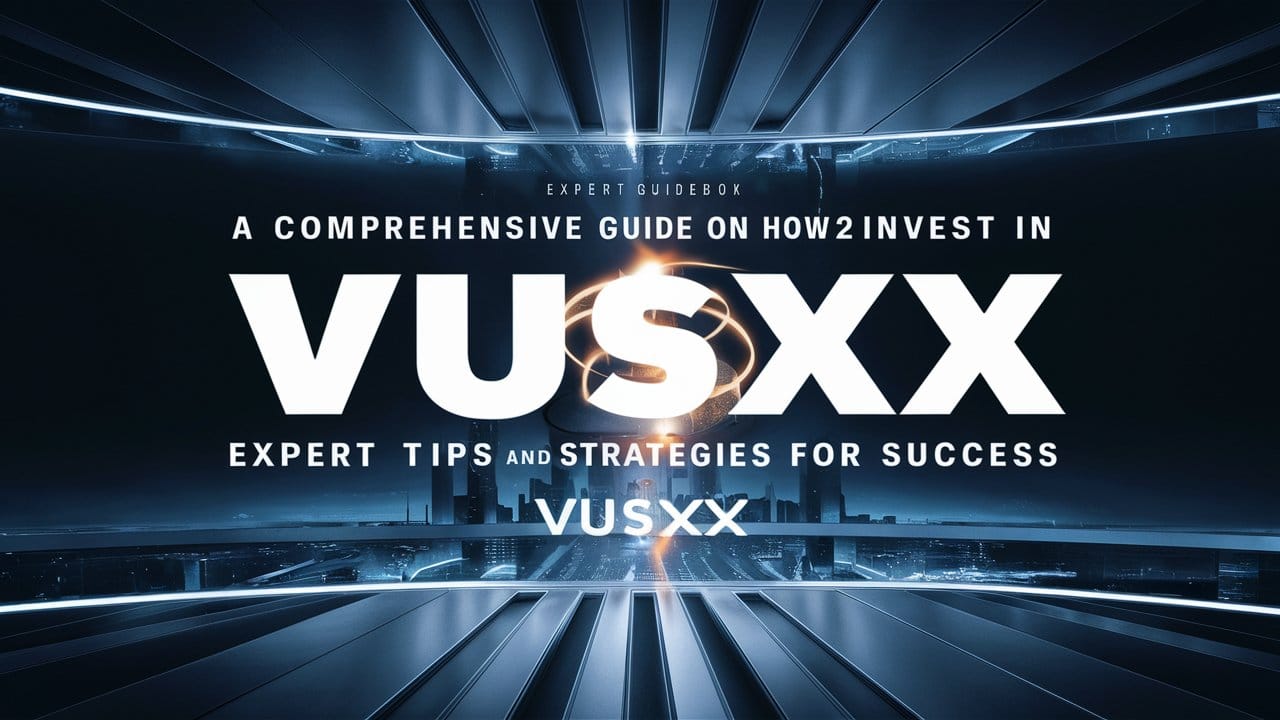Investing can seem like a daunting task for those just starting out. The financial markets are vast and complex, filled with jargon that can confuse even seasoned professionals. However, embarking on your investment journey is one of the most empowering steps you can take towards financial independence. This comprehensive guide is designed to demystify the How2invest process, providing the knowledge and tools you need to make informed decisions. Whether you’re a beginner investor or a financial enthusiast looking to expand your understanding, this guide will navigate you through the essentials of investing, from understanding basic concepts to building a diversified portfolio.
What is Investing?

Investing is allocating resources, usually money, to generate income or profit. You can invest in ventures, like starting a business, or in assets, like real estate for resale at a higher price.
Growing your money gradually is the aim of investing. Investing creates wealth and can provide additional income before retirement. Regular investments can help fulfill dreams like buying a home, funding education, or securing a comfortable retirement.
The power of compounding is the magic behind investing. Compounding grows your earnings, generating more earnings. Even small investments can grow into substantial sums over time. Starting your investment journey sooner has significant benefits.
What are the Basic Investment Concepts
Gaining an understanding of some basic ideas is essential before entering the world of investing. First is the concept of benefit vs risk. An investment has a bigger risk generally speaking the higher its possible reward. Finding out how much risk you are prepared to accept in search of possible gains is crucial.
Another key concept is the market itself. The market refers to the collective buying and selling of millions of investments, governed by the laws of supply and demand. Prices move up and down in response to various factors, including economic indicators, corporate earnings, and global events. Understanding these dynamics can help you make more informed decisions.
Asset allocation is another critical concept. It involves spreading your investments across different asset classes—like stocks, bonds, and real estate—to minimize risk. Each asset class has different levels of return and risk, so picking the right mix can significantly impact your investment outcome.
Also Read: Demystifying Ghost Commerce: What Is It and How Does It Impact E-commerce?
How to Start Investing: A Step-by-Step Guide

Step 1: Set Your Investment Goals
Before you start investing, it’s crucial to know why you’re investing. Are you putting money down for your child’s education, a down payment on a property or retirement? Setting clear, achievable goals will help guide your investment strategy and choice of investment vehicles.
Step 2: Determine Your Risk Tolerance
Your investment choices should reflect your risk tolerance. Younger investors may opt for riskier investments, like stocks, given their longer time horizon before retirement. Conversely, those closer to retirement may prefer safer options, like bonds, to preserve their capital.
Step 3: Open an Investment Account
To start investing, you’ll need to open an investment account, such as a brokerage account or a retirement account. Research different providers to find one that suits your needs, considering factors like fees, services offered, and the platform’s ease of use.
Choosing the Right Investment Options
With a plethora of investment options available, choosing the right ones can seem overwhelming. Stocks, bonds, mutual funds, exchange-traded funds (ETFs), and real estate are just a few examples. Each has its own set of characteristics, risks, and potential returns.
Stocks, or equities, represent ownership in a company. They carry more danger even if they have large potential benefits. Bonds, on the other hand, are considered safer investments, offering fixed returns over time. Mutual funds and ETFs provide diversification by pooling money from many investors to purchase a broad portfolio of stocks or bonds.
Real estate investing involves purchasing property to generate income or resell at a profit. Though it requires more capital and management, real estate can offer substantial returns and diversification benefits.
Common Mistakes Beginner Investors Make
One of the most common mistakes beginners make is investing based on emotions rather than logic. Market fluctuations can prompt rash decisions, like selling stocks out of fear during a downturn, potentially missing out on subsequent recoveries.
Another mistake is failing to diversify. Putting all your money into a single stock or sector increases your risk significantly. A diversified portfolio can help mitigate this risk, ensuring that a loss in one investment can be balanced by gains in others.
Lastly, neglecting to review and adjust your portfolio periodically can lead to misalignment with your investment goals and risk tolerance. Regularly reassessing your portfolio ensures it remains in line with your objectives.
How to Analyze Investment Opportunities

Analyzing investment opportunities involves both qualitative and quantitative assessments. Qualitatively, you should look at the business model, competitive advantage, and management team of the companies you’re considering investing in. Quantitatively, financial metrics like the price-to-earnings ratio, return on equity, and debt-to-equity ratio can provide insights into a company’s financial health and potential for growth.
Additionally, understanding the broader economic and sector trends can help inform your investment decisions. For instance, investing in technology stocks during a period of rapid technological advancement could offer significant returns.
Building a Diversified Investment Portfolio
Building a diversified portfolio is key to managing risk and achieving long-term investment goals. Start by spreading your investments across different asset classes, then within those asset classes, diversify further by investing in various sectors, industries, and geographies.
It’s also important to rebalance your portfolio periodically. As investments grow or shrink in value, your portfolio can become overweight in some areas and underweight in others. Rebalancing ensures that your portfolio maintains its intended asset allocation, aligning with your risk tolerance and investment goals.
Investment Tools and Resources for Beginners
Fortunately, beginner investors have access to a wealth of tools and resources. Online brokerages and investment apps offer user-friendly platforms for trading stocks, bonds, and other securities. Many also provide educational resources, investment research, and tools for portfolio analysis and rebalancing.
Financial news websites, investment blogs, and podcasts are great for staying informed about market trends and investment strategies. Additionally, reading books on investing can provide deeper insights into the principles of successful investing.
Continuing Education: Advancing Your Investment Knowledge

Investing is a lifelong journey of learning. As you gain experience, continuously seek to expand your knowledge. Attend investment seminars, take online courses, and engage with a community of investors to exchange ideas and strategies.
Staying informed about economic and market developments is crucial. The financial markets and investment opportunities are constantly evolving, so keeping abreast of the latest trends and innovations can help you make better investment decisions.
Also Read: Game Developer Guide: Salary Insights & Becoming a Video Game Dev
Conclusion: Embracing Your Financial Journey
Investing is an essential step towards financial independence and wealth creation. While the journey may seem challenging at first, equipping yourself with the right knowledge and tools can demystify the process and set you on the path to success. Remember, the key to successful investing is starting early, staying informed, and keeping a long-term perspective.
Embrace your financial journey with confidence, knowing that each step you take brings you closer to achieving your financial goals. Let this guide be your starting point, and continue to seek out knowledge and resources to guide you along the way to How2invest. Happy investing!
How2Invest FAQs
we’ve put together a list of the most common questions on How2Invest.
What Is Investing?
Allocating resources—most often money—with the goal of making money or profit is known as investing. It can involve purchasing stocks, bonds, mutual funds, real estate, or other assets that have the potential to increase in value over time.
How Do I Start Investing?
- Define Your Goals: Are you saving for your child’s education, a down payment on a house, or retirement?
- Build an Emergency Fund: Ensure you have 3-6 months’ worth of living expenses saved before you start investing.
- Educate Yourself: Understand the basics of the stock market, how different investment vehicles work, and the risks involved.
- Decide on an Investment Strategy: Will you be a passive investor or an active trader? Your strategy should match your risk tolerance and time commitment.
- Choose a Brokerage Account: Research and select a platform or broker that aligns with your investment goals and needs.
- Start Small: You don’t need a large sum of money to start investing. Many platforms allow you to purchase fractional shares or invest small amounts in mutual funds.
What Are the Different Types of Investments?
- Stocks: Shares represent partial ownership in a company.
- Bonds: Loans made to a corporation or government; a more secure form of investment compared to stocks.
- Mutual Funds: Pooled money from multiple investors to buy a diversified portfolio of stocks and/or bonds.
- Exchange-Traded Funds (ETFs): Similar to mutual funds but traded on stock exchanges.
- Real Estate: Investing in property, either through direct purchase or real estate investment trusts (REITs).
- Cryptocurrencies and Commodities: More speculative investments that can offer high returns but come with increased risk.
How Do I Diversify My Investment Portfolio?
Diversification involves spreading your investments across various asset classes (stocks, bonds, real estate) and sectors to reduce risk. You can achieve diversification by investing in mutual funds or ETFs that hold a variety of securities in different industries, or by directly purchasing a mix of assets that react differently to the same economic event.
What Is Risk Tolerance, and Why Is It Important?
Risk tolerance is your ability and willingness to lose some or all of your investment in exchange for potential higher returns. It’s important because it can guide your investment choices, helping ensure that you’re comfortable with the level of risk associated with your portfolio. Assessing your risk tolerance involves considering your investment horizon, financial goals, and emotional capacity to withstand market volatility.
How Can I Monitor My Investments?
Monitoring your investments involves regularly checking your portfolio’s performance and rebalancing it as necessary to meet your investment goals. Many online platforms and advisors offer tools to help track performance. It’s also important to stay informed about market trends and economic factors that could impact your investments.
When Should I Sell My Investments?
Deciding when to sell an investment depends on a variety of factors, including your financial goals, the investment’s performance, and changes in the market or economy that could affect future returns. It’s generally wise to avoid making impulsive decisions based on short-term market fluctuations. Instead, consider whether the investment still aligns with your overall strategy and goals.
How Do Taxes Affect My Investments?
Taxes can significantly impact your investment returns. Different types of investments are taxed differently. For example, long-term capital gains (investments held for over a year) typically have lower tax rates than short-term gains. It’s important to understand the tax implications of your investments and consider strategies, such as tax-loss harvesting or investing in tax-advantaged accounts like IRAs or 401(k)s, to minimize your tax liability.
Where Can I Get More Information?
For more in-depth information on investing, consider the following resources:
- Books: Many experts have written comprehensive guides on investing.
- Online Courses: Platforms like Coursera or edX offer courses on finance and investment.
- Financial Advisors: Professionals can provide personalized advice based on your specific situation.
- Investment Blogs and Websites: A wealth of free information is available online to help you stay informed about market trends and investment strategies.










